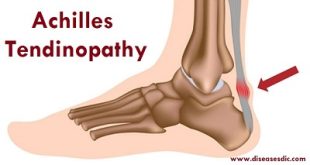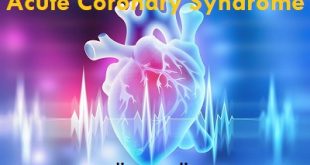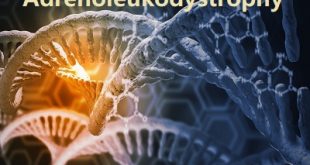What is Acne vulgaris?
Acne vulgaris is an inflammatory disorder of the pilosebaceous unit, which runs a chronic course and it is self-limiting. Acne vulgaris is triggered by Propionibacterium acne in adolescence, under the influence of normal circulating dehydroepiandrosterone (DHEA). It is a very common skin disorder which can present with inflammatory and non-inflammatory lesions chiefly on the face but can also occur on the upper arms, trunk, and back.
Acne vulgaris
Epidemiology
Acne may appear in adolescence, and it persists through the early thirties. Acne is more common in males than in females. Urban populations are more affected than rural populations. About 20% of the affected individuals develop severe acne which results in scarring. Some races appear to be more affected than others. Asians and Africans tend to develop severe acne, but mild acne is more common in the white population. In general, populations with darker skin also tend to develop hyperpigmentation. Acne can also develop in neonates but in most cases resolves spontaneously.
Types of acne vulgaris
Four main types are recognized:
Pyoderma faciale is seen usually in an older woman with existing acne who is subjected to stress when a localized but explosive pattern of the disease appears.
Acne conglobata is a severe form of the disease which affects the face, back, and limbs. Cystic and pustular lesions occur and scarring may be marked. It occurs mainly in men.
Acne fulminans is an immunologically induced severe systemic variant of acne conglobata. The clinical features are those of acne conglobata plus the classic delayed hypersensitivity systemic reaction with splenomegaly, arthropathy, and rashes.
Gram-negative folliculitis is associated with the long-term antibiotic treatment of acne. Acne which was well controlled suddenly appears to “escape” from control. This condition takes the form of a sudden eruption of small follicular pustules.
Acne vulgaris risk factors
Risk factors increase with:
- Exposure to extremely hot or cold temperatures
- Stress
- Oily skin
- Endocrine disorders
- Use of drugs, such as cortisone, male hormones, or oral contraceptives
- Family history of acne
- Some cosmetics
Acne vulgaris pathogenesis
Acne vulgaris is a multifactorial condition that ultimately results in inflammatory changes of the pilosebaceous unit.
- Although no specific genetic factor has been correlated with acne vulgaris, epidemiologic studies have demonstrated a family history of acne is associated with increased incidence.
- Diet has traditionally been associated with a causal or influential factor in acne vulgaris, but this remains controversial. However, recent data is suggestive of an association with a high glycemic index diet.
The instigating step in an acne lesion is keratinocyte proliferation and adhesion
- Androgen production controls this effect and simultaneously increases sebum production.
- These changes create an obstruction of the pilosebaceous duct and the formation of a microcomedone.
- In the setting of elevated androgens, sebum collection continues, and closed and open comedones appear.
- Bacteria, in particular, Propionibacterium acnes, proliferate within this environment and contribute to local inflammation.
- With worsening inflammatory mediators, the comedones progress to erythematous papules, pustules, cysts, and nodules.
- In the setting of unremitting disease, the cysts and nodules can rupture, incite further inflammation, and create deep sinus tracts with severe scarring
Causes of Acne vulgaris
Hormones: At around 8 years of age, the adrenal glands start to produce androgens (male hormone) and the amount produced gradually increases during puberty. The sebaceous glands respond to androgens by producing more sebum and sometimes whiteheads (closed comedones) may develop in young children.
Sebaceous gland blockage: The skin cells lining the upper part of the hair follicle duct are not shed as normal but accumulate and form a plug (comedone). The oil is trapped behind it.
Bacteria and inflammation: Increased numbers of acne bacteria (Propionibacterium acnes) accumulate in the duct and contribute to the inflammation that develops in the pimples.
Genetics: Hereditary factors contribute, however it is not known exactly how this works.
Stress: Adrenal glands produce more androgens when an individual is stressed. This can make acne worse.
Diet: Certain diets may contribute to the development of acne, however good scientific data is lacking.
Occupation: In rare cases, people working in certain industries may develop occupational acne where strict Work Health and Safety regulations have not been observed.
Symptoms of Acne vulgaris
- Skin lesions and scarring can be a source of significant emotional distress. Nodules and cysts can be painful. Lesion types frequently coexist at different stages.
- Comedones appear as whiteheads or blackheads. Whiteheads (closed comedones) are flesh-colored or whitish palpable lesions 1 to 3 mm in diameter; blackheads (open comedones) are similar in appearance but with a dark center.
- Papules and pustules are red lesions 2 to 5 mm in diameter. Papules are relatively deep. Pustules are more superficial.
- Nodules are larger, deeper, and more solid than papules. Such lesions resemble inflamed epidermoid cysts, although they lack true cystic structure.
- Cysts are suppurative nodules. Rarely, cysts form deep abscesses. Long-term cystic acne can cause scarring that manifests as tiny and deep pits (icepick scars), larger pits, shallow depressions, or hypertrophic scarring or keloids.
Acne vulgaris symptoms
Acne vulgaris complications
- Scars
- Depression
- Anxiety
- Socially withdrawn
- Poor facial aesthetics
- Lack of self-esteem
Diagnosis and test
A doctor or dermatologist will diagnose acne following a skin examination, taking note of where the acne is located and its severity. These factors are important in determining how the condition should be treated.
Professionals typically use a grading system to categorize acne:
Grade 1: Mild acne, probably limited to blackheads and whiteheads.
Grade 2: Moderate acne with papules and pustules, mostly confined to the face.
Grade 3: Moderately severe acne affecting the face, back and chest. Papules and pustules will be present, and inflamed nodules are possible.
Grade 4: Severe acne, with a large number of painful papules, pustules, and nodules.
Treatment and medications
Topical therapy
- Topical retinoids like retinoic acid, adapalene, and tretinoin are used alone or with other topical antibiotics or benzoyl peroxide. Retinoic acid is the best comedolytic agent, available as 0.025%, 0.05%, 0.1% cream, and gel.
- Topical clindamycin 1% to 2%, nadifloxacin 1%, and azithromycin 1% gel and lotion are available. Estrogen is used for Grade 2 to Grade 4 acne.
- Topical benzoyl peroxide is now available in combination with adapalene which serves as comedolytic as well as antibiotic preparation. It is used as 2.5%, 4%,and 5% concentration in gel base.
- Azelaic acid is antimicrobial and comedolytic available 15% or 20% gel. It can also be used in postinflammatory pigmentation of acne.
- Beta hydroxy acids like salicylic acid are used as topical gel 2% or chemical peel from 10% to 20% for seborrhoea and comedonal acne, as well as, pigmentation after healing of acne.
- Topical dapsone is used for both comedonal and papular acne, though there are some concerns with G6PD deficient individuals.
Before and after treatment
Systemic therapy
- Doxycycline 100 mg twice a day as an antibiotic and anti-inflammatory drug as it affects free fatty acids secretion and thus controls inflammation.
- Minocycline 50 mg and 100 mg capsules are used as once a day dose.
- Other antibiotics such as amoxicillin, erythromycin and Bactrim are sometimes used, and if bacterial overgrowth or infection is masquerading as acne, other antibiotics such as ciprofloxacin may be used in pseudomonas related ‘acne.’
- Isotretinoin is used as 0.5 mg/kg to 1 mg/kg body weight in daily or weekly pulse regimen. It controls sebum production, regulates pilosebaceous epidermal hyperproliferation, and reduces inflammation by controlling P. acnes. It may give rise to dryness, hairless, and cheilitis.
- An oral contraceptive containing low dose estrogen 20 mcg along with cyproterone acetate as anti-androgens are used for severe recurrent acne.
- Spironolactone (25 mg per day) can also be used in males. It decreases the production of androgens and blocks the actions of testosterone. If given to females, then pregnancy should be avoided because the drug can cause feminization of the fetus.
- Scars are treated with submission, trichloroacetic acid, derma roller, micro needling, or fractional CO2 laser.
Prevention of Acne vulgaris
There are several ways to help prevent the development of acne. Not all preventive measures will work for all people, however, and no technique is guaranteed to be effective.
Techniques for helping to prevent acne include:
Keeping the face clean: The face should be cleaned roughly twice daily using warm water and mild soap in order to remove impurities and dead skin cells from the surface. Avoid washing the face too often, however, and do not use harsh soap or cleanser.
Moisturize: Moisturizing can help to keep the skin moist and prevent it from peeling. Products with “non-comedogenic” on the label should not block the pores and thus also not contribute to acne.
Diet and exercise: Eating a diet rich in fruits and vegetables, and low in fats and sugars may help to control acne. Similarly, getting plenty of exercises may also help to prevent acne outbreaks, as well as promoting general good health. After exercising, be sure to wash away any residual sweat, as this can contribute to acne.
Avoid makeup: Limiting makeup use may help to prevent an acne outbreak. Any makeup that is used should be oil-free and non-comedogenic.
Shampoo often: Wash the hair regularly with shampoo. If the hair is particularly oily, use shampoo daily.
Don’t touch: Avoid the temptation to touch the face throughout the day and be sure not to squeeze, pick or pop pimples; this will allow the acne to heal naturally.
Avoid excessive sunlight and tanning beds: Too much exposure to the sun and the use of tanning beds may damage the skin and is therefore not recommended.
Over-the-counter medication: Many anti-acne products are available over the counter from pharmacists and general stores. As well as controlling outbreaks after they have occurred, these products may help to prevent an outbreak from happening in the first place.
 Diseases Treatments Dictionary This is complete solution to read all diseases treatments Which covers Prevention, Causes, Symptoms, Medical Terms, Drugs, Prescription, Natural Remedies with cures and Treatments. Most of the common diseases were listed in names, split with categories.
Diseases Treatments Dictionary This is complete solution to read all diseases treatments Which covers Prevention, Causes, Symptoms, Medical Terms, Drugs, Prescription, Natural Remedies with cures and Treatments. Most of the common diseases were listed in names, split with categories.








Sir tell me how i finish acne of me face
Clindamycin Phosphate Gel for a better result but please consult a doctor for an appropriate prescription.
sir on my face black spot how it will remove and with which foods it will remove
Apply aloe vera daily and wash after 10 min.
am fed up of it honestly
please tell me the prevention
please consult a dermatologist to get rid of this problem.
sir tell me plzz which medicine are best for my acne
please have a look into the post for acne medicine.
what do I use for milia
In due time all milia will resolve spontaneously. Hence medicine is not needed for milia.
sir ,please help had perioral dermatitis around my mouth but still my face has winkle like for an old woman pls tell m the cream that I should use to clear my mouth surrounding.
Please consult a dermatologist.
dr my face is like that which i need to use
Please consult a dermatologist for better prescription of medicine.
injection for achne vulgaris..please suggest
There is no injection for Acne but there are antibiotic creams and gels to cure it.
there are black spots nd pimples on my face how do I get rid of the all
Please consult a dermatologist.
Thanks for your advice on acne it has affected my face that im un settled but now iwill follow up with you.
I want a perfect treatment for scene vulgaris
use clindamycin gel.
note: please consult a dermatologist before use.
uneven surface nose skin. Dark spot. pimples. 53 years man
You can try laser treatment. Get prescribed from a skilled dermatologist for this kind of treatment.
my age 26, Whiteheads on my nose area. Can I take medicine for this?
Kindly consult a doctor before taking the medicine.
can you please tell me the best treatment for open pores and scars caused by acne
Salicylic acid clears pores, reduces swelling and redness, and exfoliates the skin when applied topically. It’s considered to be one of the best treatments for acne scars. You can add products with salicylic acid into your daily routine or your skin care specialist may use it for less frequent chemical peels.
I have black spot all iver my face,is there treatment for it?? I have tried many cosmetic cream but it didn’t work for me
Please consult a dermatologist to get rid of black spots.
what is the best medicine I should use to treat black spots and pimples on my face
Retinol: This can unclog pores and fade dark spots. You’ll find benzoyl peroxide, salicylic acid, or retinol in acne products that you can buy without a prescription. Retinol is a type of retinoid. Another retinoid that may be helpful is adapalene gel 0.1%.
please tell me what to doit too much on my face
Please consult a dermatologist to cure acne.
I have pimples and black spot all over my back,face and chest, what should I use to get rid of it
Aloe Vera Gel. Apply aloe vera juice or natural aloe vera gel directly to the dark spots for 30 minutes in the morning and evening.
which medicines will more efficiently cure my acne? I useDoxycycline 100mg but, it has very poor result.
kindly consult a doctor for appropriate antibiotic for proper results.
pls sir how should I use the Clindamycin gel
– Wash the affected area with warm water and gently pat dry with a clean towel.
– Use you fingertips to spread a thin layer of gel evenly over the affected area. Avoid getting the gel in your eyes, nose, mouth, or other body openings. If you do get the gel in your eyes, wash with warm water.
– Look in the mirror. If you see a white film on your skin, you have used too much medication.
– Wash your hands.